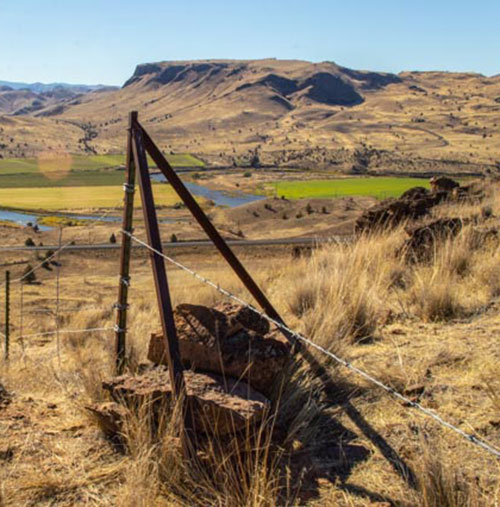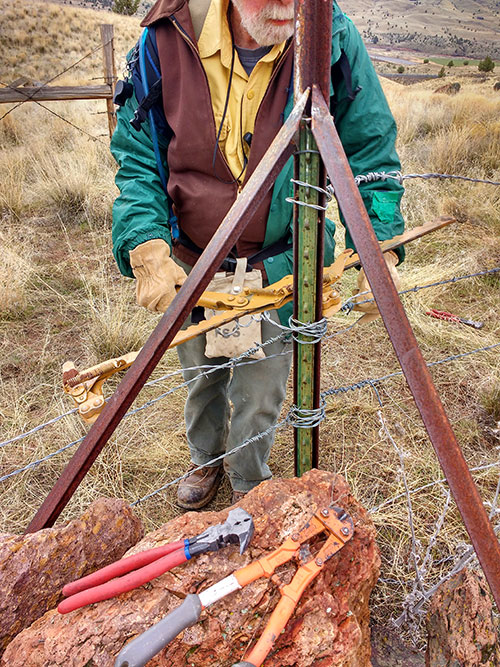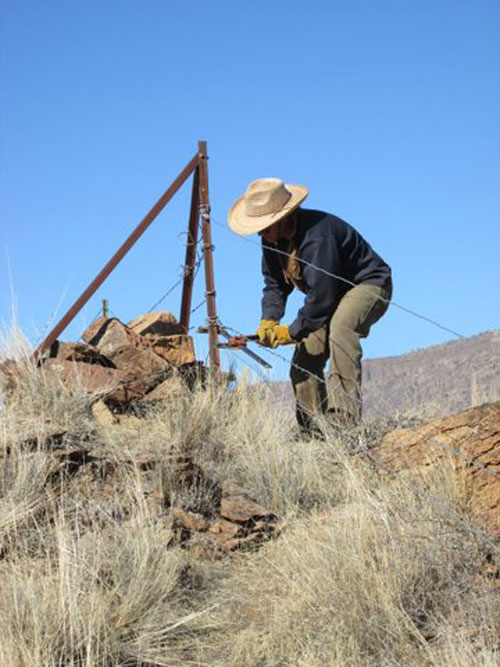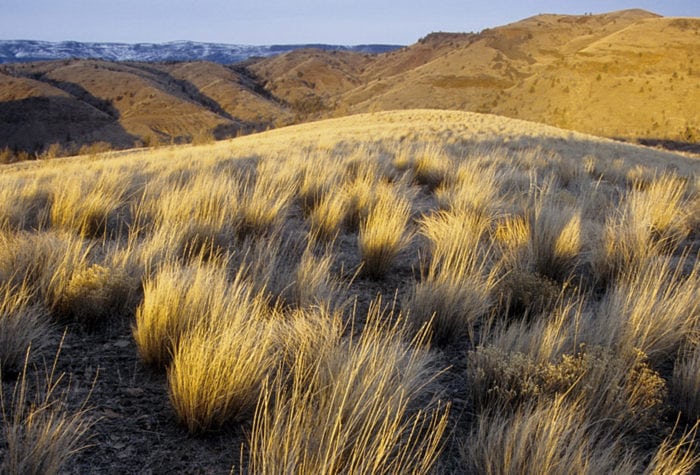John Day Fossil Beds
Sam Hartman
Goal
Work with the National Park Service to remove obsolete barbed wire fence and retrofit existing fence to ensure that wildlife can safely travel through this critical habitat without the risk of becoming ensnared
Timeline
Project Start Year: 2018
Anticipated Completion: 2035
Acreage
14,000 acres in three separate units: Clarno, Painted Hills, and Sheep Rock

About this place
While the John Day Fossil Beds National Monument features 40 million years of fossil history and animals that have been dead for eons, the monument is also home to many living species. Pronghorn, cougar, coyote, as well as many bird, reptile, amphibian, and fish species thrive alongside the John Day River, Bridge Creek and Rock Creek.
According to "Floating in the Stream of Time: An Administrative History of John Day Fossil Beds National Monument," the upper John Day Basin was home to the Tenino and other Plateau peoples as well as Northern Paiute bands from the Great Basin. The Sheep Rock Unit appears to have been primarily occupied by the Northern Paiute in the early historic period, and the Tenino, Umatilla, Molala, Wasco, Cayuse, and Nez Perce may have been in the area at various times. Both Painted Hills and Clarno appear to be within the Tenino and perhaps the Umatilla and Northern Paiute culture area.
All three park units are within the territory ceded by the Confederated Tribes of Warm Springs in the 1855 treaty. These groups retain the right to fish, hunt and gather berries at traditional places within aboriginal territory delineated by treaty. The monument is outside an area ceded by the Umatilla, Cayuse and Walla Walla people, but is within their larger aboriginal territory. Leaders of seven Northern Paiute bands signed a treaty in 1868. They did not cede any land, and the treaty remained unratified.
The monument was established in 1975 “to protect the paleontological resources of the John Day Basin and provide for, and promote, the scientific and public understanding of those resources.”

Our efforts
As habitat disappears and shrinks throughout Oregon and across the country, the John Day Fossil Beds National Monument increases in importance as part of a patchwork of remaining protected areas that provide critical habitat for a number of wildlife species. Rewilding this landscape for the preservation of wildlife habitat is important work that ONDA has been conducting for a number of years and will continue into the future.
In cooperation with the National Park Service, we are removing obsolete barbed wire fence and retrofitting existing fence to ensure that wildlife can safely travel through this critical habitat without the risk of becoming ensnared. Retrofitting fence involves removing the top and bottom strands of barbed wire and replacing them with smooth wire at heights that allow for safe passage over and under the fence.

Project history
ONDA began retrofitting fence on the John Day Fossil Beds National Monument in 2018.
In 2018, ONDA retrofitted 1.5 miles of the 7-mile total boundary fence on the south and west sides of the Clarno Unit.
In the spring of 2019, ONDA retrofitted another half mile of Clarno Unit boundary fence.
In coming years, we intend to retrofit fence on all three units of the national monument.
Restoring Lands and Waters
Oregon Natural Desert Association restores key habitats across Oregon’s high desert and advocates for management to support healthy ecosystems, clean water and high quality wildlife habitat. We partner with public […]
Read MoreEngaging Volunteers in Restoration Work
To improve habitat resiliency and ecosystem health, ONDA offers volunteer opportunities across the high desert. Options include hosted group stewardship trips and independent stewardship projects in beautiful and iconic central […]
Read More